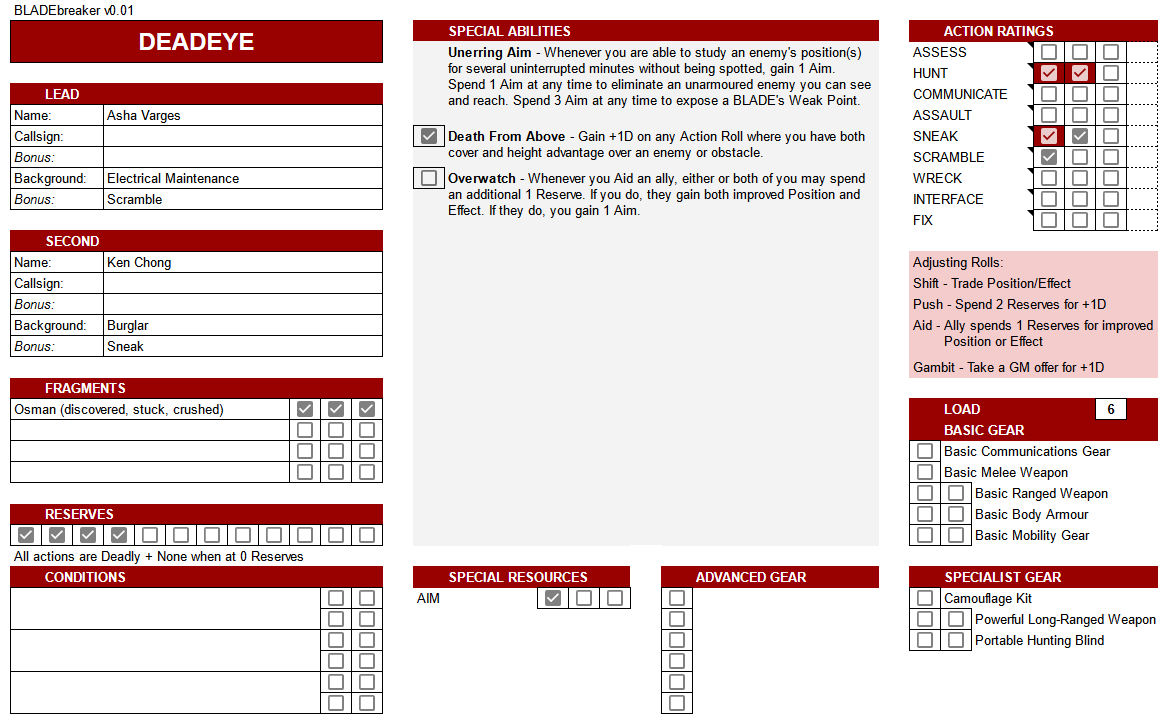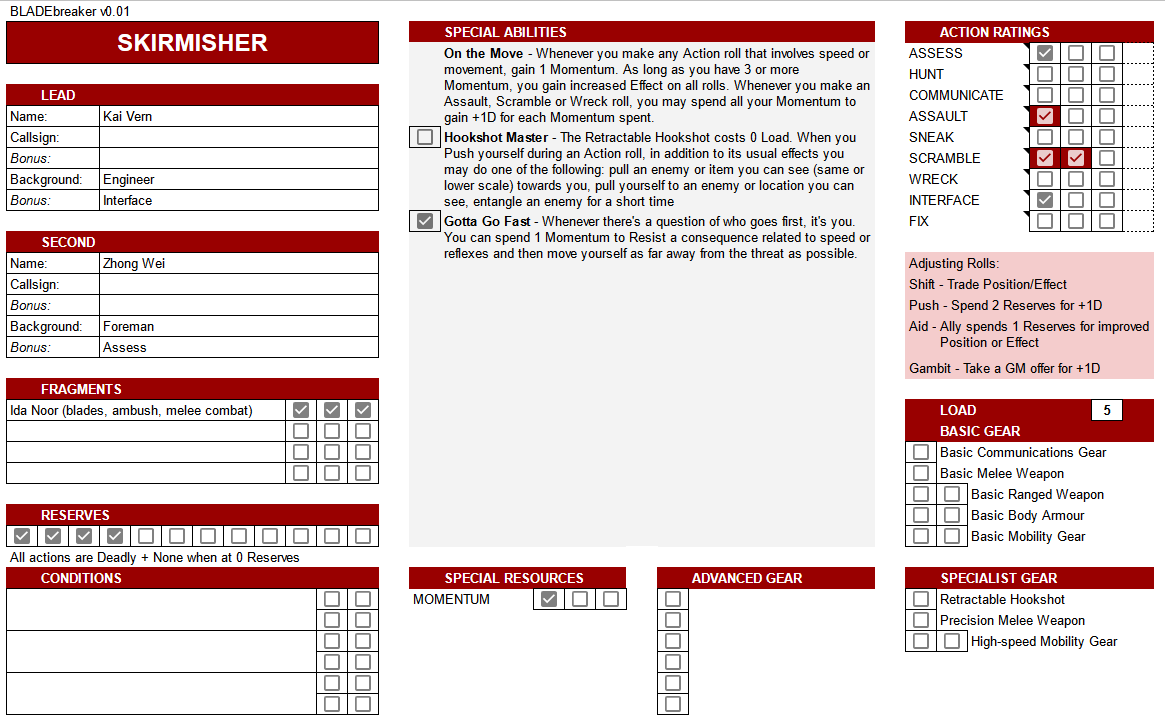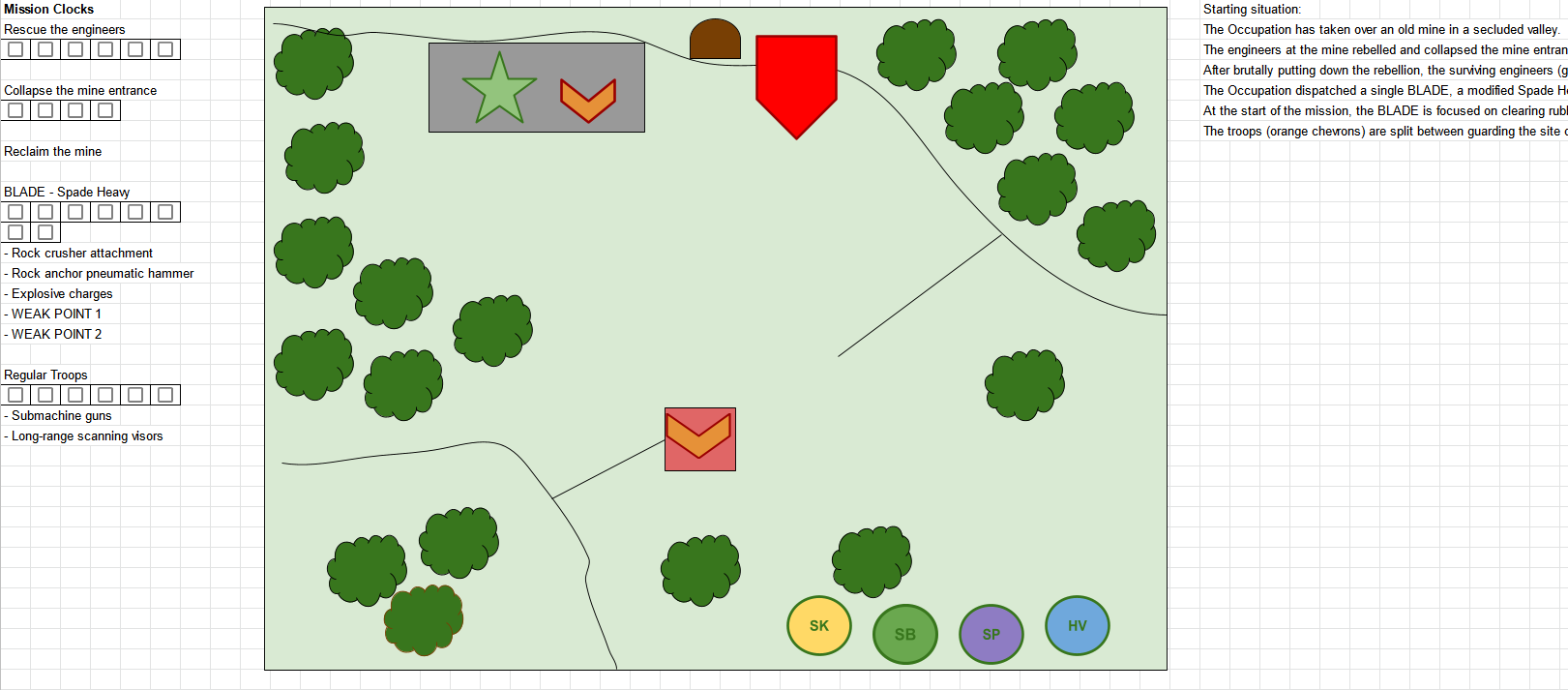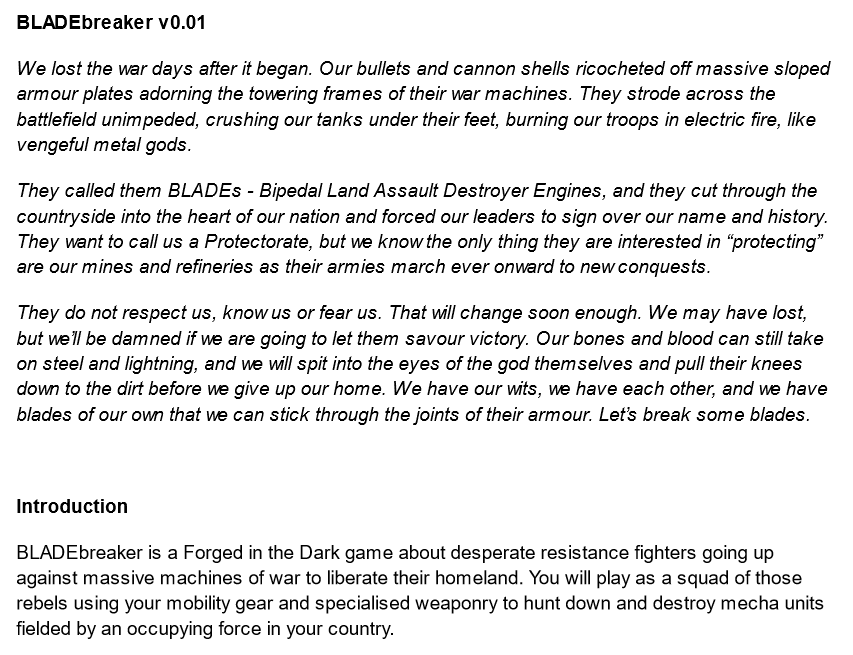A Quick BLADE

Happy Friday, town mice and country mice!
Gonna be a quick one today since I was hit by a bout of food poisoning this week and have also been quite busy after that catching up with work and playtests.
One thing that I did get done before getting sick was update the BLADEbreaker draft to finally start sketching out how the strategy/campaign layer might look like and work on some Downtime activities. I've also started updating all the BLADEbreaker playbooks to match the ones that I had tested out at a previous Playtest Zero event.
If you missed the previous newsletter where I summarized the main projects I've been focusing on, here's the quick pitch for BLADEbreaker:
BLADEbreaker is a Forged in the Dark game about desperate resistance fighters facing terrible machines of destruction. The Occupation has taken over your Homeland, thanks to their use of massive mecha called BLADEs (Bipedal Land Assault Destroyer Engine). As members of a resistance cell specializing in taking on and taking out enemy BLADEs, you will face dangerous enemies and challenges to build up the resistance network, retake the Capital, and oust the Occupation from your home.

Some further details to pique your interest:
- You don't just play one character, you play both the Lead and Second in a Battlepair. In Missions you're assumed to primarily be controlling the Lead, but you can also have a say in what your Second does to support you in Missions and can play both of them outside of Missions (This part of it is still a bit light on details and delineations, and is on my task list).
- You can't just Resist consequences by rolling dice and paying Stress. The only way to do so is to spend a use of a Fragment, which is related to the memories of a previous Lead. When a Lead dies, you immediately shift to their Second and create a memory Fragment of the previous Lead. This gives you more flexibility to Resist consequences later on.
- Each playbook has a unique Special Resource that they gain and spend in different ways via their Special Abilities.
- There isn't a set number of Downtime Activities that each player takes, but you decide together on what you want to do and each Downtime Activity ends up ticking the Retaliation Clock which provides the Facilitator with more tools that they can use on Missions.
- I built a pseudo-virtual tabletop into the Google Sheets character keeper with a map of the sample Mission I've been running, along with simple tokens. It's very silly but it works.

You can check out the current draft of the playtest package (which is still in pretty rough shape) on Google Docs here, and you can have a look at the accompanying playbooks and sample Mission on Google Sheets here.

Let me know what you think! I'll be running playtests of different parts of the game at Playtest Zero sessions occassionally and if you're keen on giving it a try, do let me know via social media or check out the playtesting Discord.
Breaking regards,
Aaron
